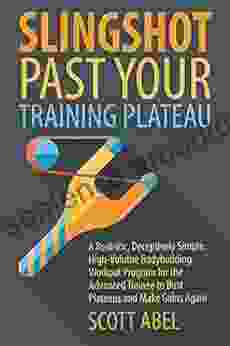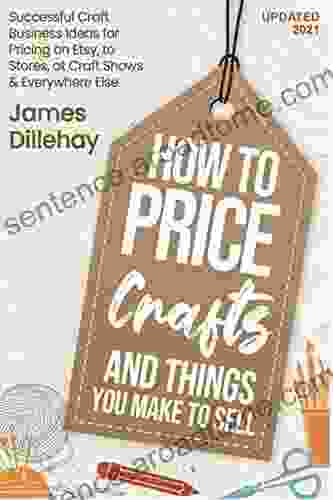How to Price Crafts and Things You Make to Sell: A Comprehensive Guide

Are you a crafter who's passionate about making and selling your handmade creations? If so, you know that pricing your crafts can be a daunting task. After all, you want to make sure you're charging a fair price that reflects the value of your work, but you also don't want to price yourself out of the market.
This comprehensive guide will provide you with everything you need to know about pricing crafts and handmade items. We'll cover everything from calculating your costs to understanding market demand. By the end of this guide, you'll be able to confidently set prices for your crafts that maximize your profit and attract customers.
Step 1: Calculate Your Costs
The first step to pricing your crafts is to calculate your costs. This includes the cost of materials, labor, and overhead.
Material Costs
The cost of materials is the cost of the raw materials you use to make your crafts. This can include things like fabric, yarn, beads, paint, and wood.
To calculate the cost of materials, simply add up the cost of each individual material you use. For example, if you're making a necklace and you use $5 worth of beads, $2 worth of wire, and $1 worth of a clasp, the cost of materials for that necklace would be $8.
Labor Costs
Labor costs are the cost of your time. This includes the time you spend designing, making, and packaging your crafts.
To calculate your labor costs, you need to first determine how much you want to earn per hour. Once you know your hourly rate, you can simply multiply that rate by the number of hours you spend working on each craft.
For example, if you want to earn $20 per hour and you spend 2 hours making a necklace, the labor cost for that necklace would be $40.
Overhead Costs
Overhead costs are the costs of running your business. This can include things like rent, utilities, marketing, and insurance.
To calculate your overhead costs, you need to add up all of your business expenses. Once you have a total, you can divide that number by the number of crafts you sell in a year to get your overhead cost per craft.
For example, if your total business expenses are $1,000 and you sell 100 crafts in a year, your overhead cost per craft would be $10.
Step 2: Understand Market Demand
Once you know your costs, you need to understand market demand. This means researching what similar crafts are selling for in your area.
You can do this by visiting craft fairs, browsing online marketplaces, and talking to other crafters. Once you have a good understanding of market demand, you can start to set prices for your crafts.
Step 3: Set Your Prices
Now that you know your costs and market demand, you can start to set prices for your crafts. There are a few different pricing strategies you can use.
Cost-Plus Pricing
Cost-plus pricing is the simplest pricing strategy. It involves adding a markup to your costs. The markup is a percentage of your costs that you want to profit.
For example, if you want to earn a 50% profit on a necklace that costs you $10 to make, you would add a $5 markup to your costs. This would give you a selling price of $15.
Value Pricing
Value pricing is a pricing strategy that takes into account the perceived value of your crafts. This means charging a price that you believe your customers are willing to pay for your crafts.
To use value pricing, you need to first determine what your customers value about your crafts. Once you know what your customers value, you can start to set prices that reflect that value.
For example, if you're making a necklace that is made with high-quality materials and has a unique design, you can charge a higher price for it than a necklace that is made with low-quality materials and has a simple design.
Competitive Pricing
Competitive pricing is a pricing strategy that involves setting your prices in line with your competitors. This means researching what similar crafts are selling for in your area and setting your prices accordingly.
Competitive pricing can be a good option if you're just starting out and you're not sure how to price your crafts. Once you've established yourself in the market, you can start to experiment with different pricing strategies.
Tips for Pricing Your Crafts
Here are a few tips for pricing your crafts:
- Start by calculating your costs. This will give you a baseline for setting your prices.
- Research market demand. This will help you understand what similar crafts are selling for in your area.
- Experiment with different pricing strategies. There is no one-size-fits-all approach to pricing crafts.
- Be willing to adjust your prices. As your business grows and changes, you may need to adjust your prices accordingly.
- Don't be afraid to charge what you're worth. Your crafts are worth what you charge for them.
Pricing crafts can be a daunting task, but it doesn't have to be. By following the steps in this guide, you can set prices for your crafts that maximize your profit and attract customers.
Remember, the goal is to find a price that is fair to you and your customers. If you're not sure where to start, start by calculating your costs and researching market demand. From there, you can experiment with different pricing strategies until you find one that works for you.
Do you want to contribute by writing guest posts on this blog?
Please contact us and send us a resume of previous articles that you have written.
 Book
Book Novel
Novel Page
Page Chapter
Chapter Text
Text Story
Story Genre
Genre Reader
Reader Library
Library Paperback
Paperback E-book
E-book Magazine
Magazine Newspaper
Newspaper Paragraph
Paragraph Sentence
Sentence Bookmark
Bookmark Shelf
Shelf Glossary
Glossary Bibliography
Bibliography Foreword
Foreword Preface
Preface Synopsis
Synopsis Annotation
Annotation Footnote
Footnote Manuscript
Manuscript Scroll
Scroll Codex
Codex Tome
Tome Bestseller
Bestseller Classics
Classics Library card
Library card Narrative
Narrative Biography
Biography Autobiography
Autobiography Memoir
Memoir Reference
Reference Encyclopedia
Encyclopedia Miriam A Locher
Miriam A Locher James Hutton
James Hutton Jane Field Lewis
Jane Field Lewis James Ferretti
James Ferretti Pat Ware
Pat Ware Matthew Katzer
Matthew Katzer Jed Baker
Jed Baker Janie Sanders
Janie Sanders Jane Gilgun
Jane Gilgun Shannon Sovndal
Shannon Sovndal Tatum O Neal
Tatum O Neal Joe Sonderman
Joe Sonderman Joseph Loconte
Joseph Loconte Jay Shafer
Jay Shafer James Tyler
James Tyler Richard Drake
Richard Drake Janis Hutchinson
Janis Hutchinson James Ray Miller
James Ray Miller John D Lantos
John D Lantos Jay Haley
Jay Haley
Light bulbAdvertise smarter! Our strategic ad space ensures maximum exposure. Reserve your spot today!

 Julio Ramón RibeyroDamanhur: Magical Temples and the Superindividual - Unlocking the Secrets of...
Julio Ramón RibeyroDamanhur: Magical Temples and the Superindividual - Unlocking the Secrets of...
 Clay PowellEscape Loneliness and Forge Unbreakable Bonds with "Building Deep Community...
Clay PowellEscape Loneliness and Forge Unbreakable Bonds with "Building Deep Community...
 Dallas TurnerSuccess Stories Of The Blind And Worst Vision Survivors Who Fully Restored...
Dallas TurnerSuccess Stories Of The Blind And Worst Vision Survivors Who Fully Restored... Simon MitchellFollow ·10.1k
Simon MitchellFollow ·10.1k Langston HughesFollow ·16.5k
Langston HughesFollow ·16.5k Edgar CoxFollow ·6.7k
Edgar CoxFollow ·6.7k Luke BlairFollow ·4k
Luke BlairFollow ·4k Jared NelsonFollow ·15.8k
Jared NelsonFollow ·15.8k David BaldacciFollow ·11.9k
David BaldacciFollow ·11.9k James JoyceFollow ·3.6k
James JoyceFollow ·3.6k Howard PowellFollow ·13.1k
Howard PowellFollow ·13.1k

 Davion Powell
Davion PowellUnlock Your Muscular Potential: Discover the...
Are you tired of bodybuilding programs...

 Enrique Blair
Enrique BlairDominate the Pool: Conquer Performance with the DS...
As a swimmer, you...

 Christopher Woods
Christopher Woods"The Physics of Getting Out of Your Own Way": A Journey...
Break Free from...

 Milan Kundera
Milan KunderaWhat Really Sank The Titanic: New Forensic Discoveries
The sinking of the RMS...

 Ralph Waldo Emerson
Ralph Waldo EmersonUnveiling the Truth: Exposing the Hidden Dangers of Lyme...
In the realm of chronic illnesses, Lyme...








